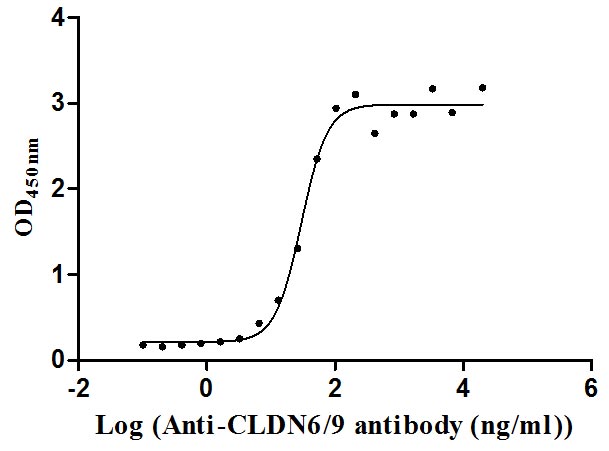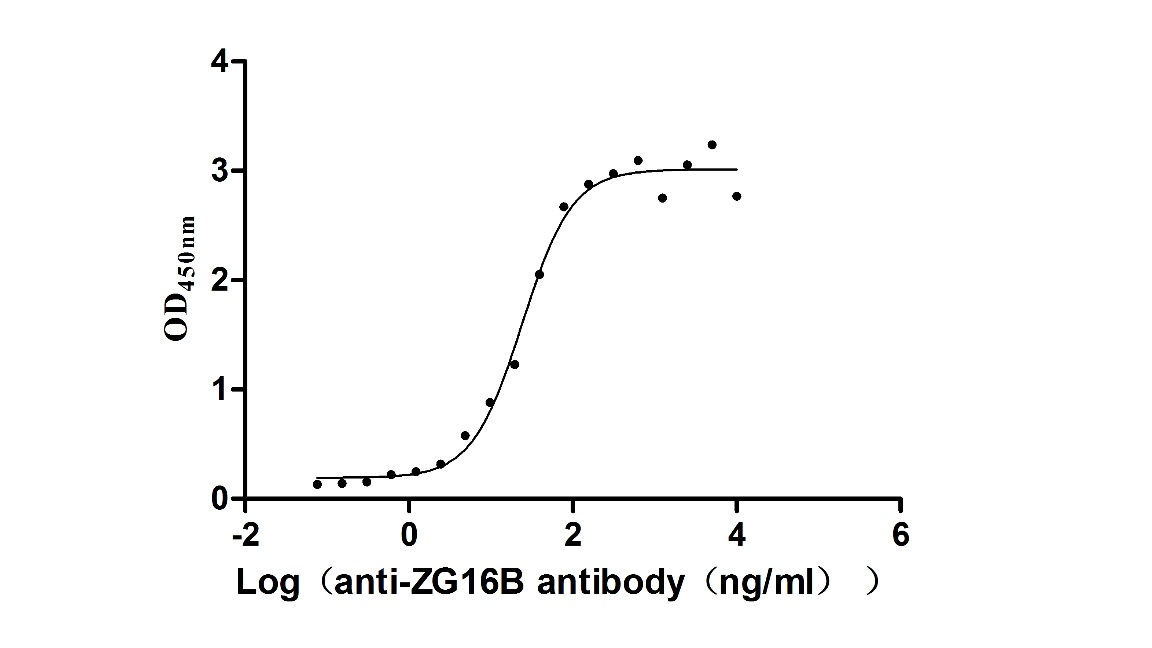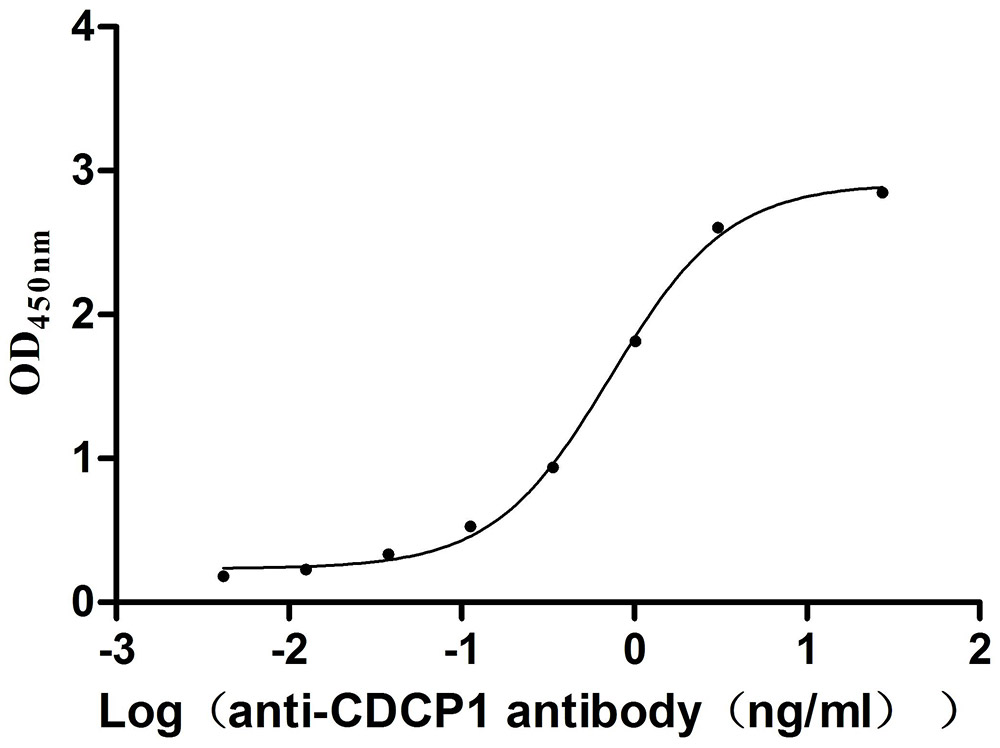Recombinant Mouse Baculoviral IAP repeat-containing protein 1e (Naip5), partial
-
中文名稱:小鼠Naip5重組蛋白
-
貨號:CSB-YP889915MO
-
規(guī)格:
-
來源:Yeast
-
其他:
-
中文名稱:小鼠Naip5重組蛋白
-
貨號:CSB-EP889915MO
-
規(guī)格:
-
來源:E.coli
-
其他:
-
中文名稱:小鼠Naip5重組蛋白
-
貨號:CSB-EP889915MO-B
-
規(guī)格:
-
來源:E.coli
-
共軛:Avi-tag Biotinylated
E. coli biotin ligase (BirA) is highly specific in covalently attaching biotin to the 15 amino acid AviTag peptide. This recombinant protein was biotinylated in vivo by AviTag-BirA technology, which method is BriA catalyzes amide linkage between the biotin and the specific lysine of the AviTag.
-
其他:
-
中文名稱:小鼠Naip5重組蛋白
-
貨號:CSB-BP889915MO
-
規(guī)格:
-
來源:Baculovirus
-
其他:
-
中文名稱:小鼠Naip5重組蛋白
-
貨號:CSB-MP889915MO
-
規(guī)格:
-
來源:Mammalian cell
-
其他:
產(chǎn)品詳情
-
純度:>85% (SDS-PAGE)
-
基因名:Naip5
-
Uniprot No.:
-
別名:Naip5; Birc1e; Naip-rs3Baculoviral IAP repeat-containing protein 1e; Neuronal apoptosis inhibitory protein 5
-
種屬:Mus musculus (Mouse)
-
蛋白長度:Partial
-
蛋白標(biāo)簽:Tag?type?will?be?determined?during?the?manufacturing?process.
The tag type will be determined during production process. If you have specified tag type, please tell us and we will develop the specified tag preferentially. -
產(chǎn)品提供形式:Lyophilized powder
Note: We will preferentially ship the format that we have in stock, however, if you have any special requirement for the format, please remark your requirement when placing the order, we will prepare according to your demand. -
復(fù)溶:We recommend that this vial be briefly centrifuged prior to opening to bring the contents to the bottom. Please reconstitute protein in deionized sterile water to a concentration of 0.1-1.0 mg/mL.We recommend to add 5-50% of glycerol (final concentration) and aliquot for long-term storage at -20℃/-80℃. Our default final concentration of glycerol is 50%. Customers could use it as reference.
-
儲(chǔ)存條件:Store at -20°C/-80°C upon receipt, aliquoting is necessary for mutiple use. Avoid repeated freeze-thaw cycles.
-
保質(zhì)期:The shelf life is related to many factors, storage state, buffer ingredients, storage temperature and the stability of the protein itself.
Generally, the shelf life of liquid form is 6 months at -20°C/-80°C. The shelf life of lyophilized form is 12 months at -20°C/-80°C. -
貨期:Delivery time may differ from different purchasing way or location, please kindly consult your local distributors for specific delivery time.Note: All of our proteins are default shipped with normal blue ice packs, if you request to ship with dry ice, please communicate with us in advance and extra fees will be charged.
-
注意事項(xiàng):Repeated freezing and thawing is not recommended. Store working aliquots at 4°C for up to one week.
-
Datasheet :Please contact us to get it.
靶點(diǎn)詳情
-
功能:Sensor component of the NLRC4 inflammasome that specifically recognizes and binds flagellin from pathogenic bacteria such as Legionella or Salmonella. Association of pathogenic bacteria proteins drives in turn drive assembly and activation of the NLRC4 inflammasome, promoting caspase-1 activation, cytokine production and macrophage pyroptosis. The NLRC4 inflammasome is activated as part of the innate immune response to a range of intracellular bacteria. The NLRC4 inflammasome senses Gram-negative bacteria such as L.pneumophila and P.aeruginosa, enteric pathogens S.typhimurium (Salmonella) and S.flexneri. May contribute to prevent motor-neuron apoptosis induced by a variety of signals.
-
基因功能參考文獻(xiàn):
- Six distinct NAIP5 domains contact multiple conserved regions of flagellin, prying NAIP5 into an open and active conformation. PMID: 29146805
- Arsenicals, including arsenic trioxide and sodium arsenite, inhibited activation of the NLRP1, NLRP3, and NAIP5/NLRC4 inflammasomes. PMID: 24337744
- Primary microglial cells have a functional Naip5-NLR family CARD domain containing 4 (NLRC4) inflammasome likely to be important to monitor and clear central nervous system infections by flagellated bacteria. PMID: 23355222
- the NAIP5-NLRC4 inflammasome is induced by direct interactions with conserved N- and C-terminal regions of flagellin PMID: 23012363
- genetic polymorphism is associated with susceptibility to Legionella pneumophila infection PMID: 21794945
- Our results indicate that NAIP5 regulates the apparent specificity of the NLRC4 inflammasome for distinct bacterial ligands. PMID: 21282416
- Data define an additional anti-pathogen effector mechanism operated through Naip5 and Nlrc4 inflammasomes and illustrated a novel signaling transduction pathway that activates iNOS. PMID: 20702413
- Birc1e is the gene within the Lgn1 locus associated with resistance to Legionella pneumophila PMID: 12483212
- We conclude that polymorphisms in Naip5 are involved in the permissiveness differences of mouse macrophages for intracellular Legionella replication. PMID: 12526741
- role in intracellular replication of Legionella pneumophila in macrophages [review] PMID: 15935674
- Macrophages sense cytosolic flagellin via a toll-like receptor 5-independent pathway that leads to rapid caspase-1-dependent cell death and provides defense against intracellular bacterial pathogens. PMID: 16552444
- Results suggest that sensing of L. pneumophila products by Birc1e/Naip5 in macrophages occurs rapidly following phagocytosis. PMID: 17087731
- Naip5 or Ipaf were not required for induction of TNF-alpha and type I IFN. PMID: 17506816
- mice deficient in the intracellular sensor Naip5 failed to activate the inflammasome in response to the 35 amino acids of flagellin or in response to Legionella pneumophila infection. PMID: 18724372
- flagellin sensing by the NLR proteins Naip5 and Nlrc4 may be coupled to Irf1-Irf8-mediated transcriptional activation of key effector genes essential for macrophage resistance to L. pneumophila infection. PMID: 19720760
顯示更多
收起更多
-
組織特異性:Detected in macrophages (at protein level).
-
數(shù)據(jù)庫鏈接:
Most popular with customers
-
Recombinant Human Claudin-9 (CLDN9)-VLPs (Active)
Express system: Mammalian cell
Species: Homo sapiens (Human)
-
Recombinant Human Claudin-6 (CLDN6)-VLPs (Active)
Express system: Mammalian cell
Species: Homo sapiens (Human)
-
Recombinant Macaca fascicularis zymogen granule protein 16 homolog B (ZG16B) (Active)
Express system: Mammalian cell
Species: Macaca fascicularis (Crab-eating macaque) (Cynomolgus monkey)
-
Recombinant Mouse CUB domain-containing protein 1 (Cdcp1), partial (Active)
Express system: Mammalian cell
Species: Mus musculus (Mouse)
-
Recombinant Human Cadherin-1(CDH1),partial (Active)
Express system: Mammalian cell
Species: Homo sapiens (Human)
-
Recombinant Human Interleukin-12 receptor subunit beta-1(IL12RB1),partial (Active)
Express system: Mammalian cell
Species: Homo sapiens (Human)



-AC1.jpg)













